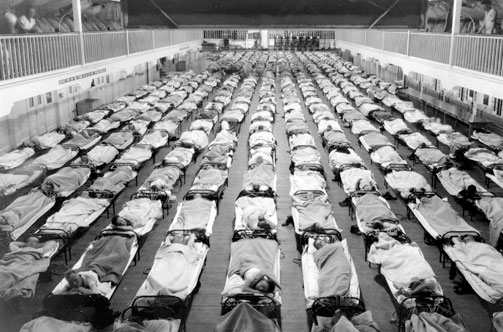
The 1918 pandemic flu killed 40 million people in 1 year. Imagine every psychotic diabolical warlord throughout history (Hitler, Milosevic, the Japanese in WWII, Bush, Sadam) rolled into a tiny micro-organism composed of 8 gene segments. So when scientists discovered a woman in the Alaskan permafrost from 1918 who had died of spanish flu- what did they do? They sequenced all the genes and reconstructed it, unleashed it and bought a bunch of property. (No, they aren't THAT clever.)
Using a technique called 'reverse genetics' we are now able to reconstruct viruses de novo with just the genetic components. Basically you throw in the genes into some cells and they assemble into viruses which can later be studied. Terence Tumpey had the honour of doing this in a highly controlled environment in the CDC. The tested the virus on several animal models and are still trying to figure out how the immune system succumbs to the infection. The technique also allows you to mix and match viruses, swapping genes with less potent flu virus genes to compare and determine how some virus parts can contribute to virulence.
What is important about 1918-
pathogenicity- the fact that it can kill so quickly, experiments on mice showed that the virus was 100 times worse that the viruses that circulate in yearly epidemic form.
Transmissability- the virus could spread between humans.
Comparison to H5N1- the current highly pathogenic strain that's circulating at the moment has several similarities to the 1918. Important to know more as H5N1 evolves.
Baron de Rothschild, "When there's blood on the streets, buy property"


No comments:
Post a Comment